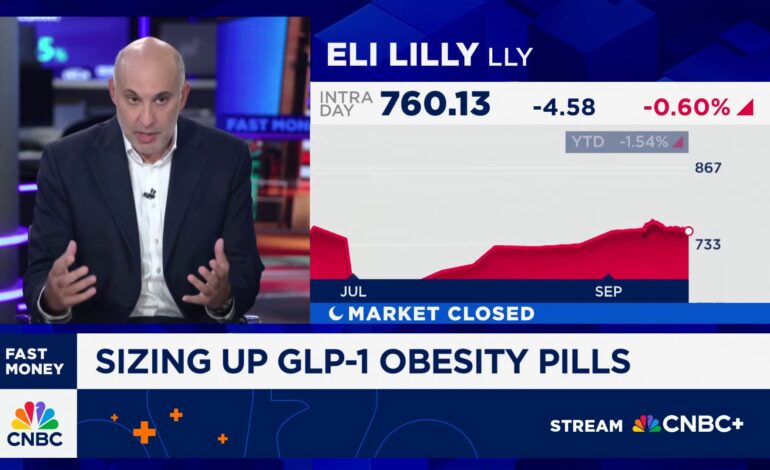Market Response to GLP-1 Competition from Novo Nordisk and Eli Lilly

The financial markets are currently adjusting to the competitive landscape surrounding the GLP-1 pill segment, according to insights from Jared Holz of Mizuho Securities. During an appearance on the show Fast Money, Holz discussed the ongoing rivalry between major pharmaceutical companies Novo Nordisk and Eli Lilly, both of which have made significant advancements in this class of medications designed to manage weight and diabetes.
Holz emphasized that the market’s delayed reaction to the competition highlights investor uncertainty. The GLP-1 medications have garnered substantial attention, primarily due to their effectiveness in promoting weight loss and improving glycemic control in patients with type 2 diabetes. As both companies continue to innovate, their respective products are poised to influence market dynamics significantly.
The competition is intensifying as both companies launch new formulations and marketing strategies aimed at capturing a larger share of the growing demand for obesity and diabetes treatments. As of October 2023, Mizuho has been closely monitoring the performance of these drugs and their impact on stock prices. Holz noted that the potential for market disruption is considerable, given the increasing prevalence of obesity and diabetes worldwide.
In the latest figures, Novo Nordisk recently reported a remarkable 32% increase in sales attributed to its GLP-1 products, while Eli Lilly is also experiencing a surge in demand. Holz pointed out that these figures reflect a broader trend in consumer health, where effective treatments are becoming more sought after. The success of these medications is attributed not only to their clinical efficacy but also to the companies’ strategic marketing efforts.
As the landscape evolves, investors are keenly observing how market share will be distributed between these two pharmaceutical giants. Holz mentioned that understanding the implications of this competition will be crucial for stakeholders. The potential for price adjustments and shifts in consumer preferences can reshape the market considerably.
Regulatory factors also play a pivotal role in this competitive arena. Both Novo Nordisk and Eli Lilly are navigating complex approval processes in various regions, which could affect the timing and scope of their product launches. Holz highlighted the importance of staying informed about these developments, as they could influence investor sentiment and market valuations.
In conclusion, the competitive environment surrounding GLP-1 medications is marked by rapid advancements and significant investment potential. With both Novo Nordisk and Eli Lilly pushing the boundaries of innovation, the financial markets are watching closely to see how this battle unfolds. As of now, Holz’s insights suggest that the market’s reaction may still be in its early stages, indicating that further developments could lead to shifts in investor strategies moving forward.






